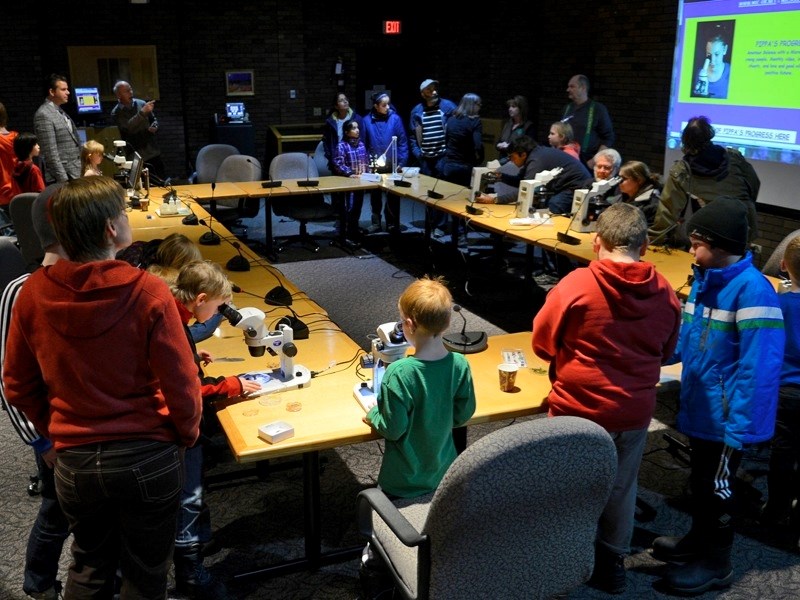An entire new world can be seen under the magnification of a microscope. Objects previously thought small appear large and full of life.
Dr. Roland Treu presented at Science Outreach-Athabasca last Thursday with a demonstration and talk titled “Invisible Domains: The World Under a Microscope” at Athabasca University Governing Council Chambers.
“Microscopes were invented … in the Netherlands by Hans Lippershey and Zacharias Janssen,” Treu said. “That is all we know for sure, and usually these two people are named as the inventors.”
These Dutch men have been discussed at length since the inception of the microscope.
“It’s a bit controversial,” Treu said. “We don’t really know the whole story.”
All that is known for certain is that the microscope first surfaced in the late 1500s.
“However, none of these early microscopes were preserved, so we only have drawings to go by,” he explained.
Although others invented the microscope, Galileo Galilei was the first one to document the use of one.
“He also had the audacity to challenge the church because he was actually claiming that the earth is not at the centre of the universe, but … supported the proposition that the earth actually revolves around the sun,” Treu said. “There was a little bit of a clash of opinions, and it didn’t do him very well because he spent the rest of his life under house arrest.”
Treu said Galilei introduced many other people to the use of microscopes.
“Another really important person, a Dutch man, Antonie van Leeuwenhoek, was the one who really further developed microscopes to a much better quality,” he explained. “He is usually associated with microbiology, and he was the first microbiologist.”
Treu said van Leeuwenhoek was also the first person to ever see a microorganism.
“Leeuwenhoek was a fairly sophisticated businessman, and because of this, he was involved in local politics, and being a businessman, once he developed his microscope, many people tried to find out from him how he developed it,” Treu said. “He never actually told anyone.”
Although it was a fairly simple process, van Leeuwenhoek kept the secret to himself.
“He was a lens maker. He found a very simple but very efficient way to create very small, very efficient lenses,” Treu said. “These lenses became the base material for his microscopes, and he was savvy enough not to let anyone know how he did that. And as a result, he had a monopoly on microscopes.”
Although van Leeuwenhoek never published a book, some of his knowledge is preserved in correspondence, which is stored at the Royal Academy in London.
“His impact on microscopy and microbiology is just unbelievable. He opened a new world,” Treu explained.
Microscopes have changed; however, from the time they were created until the 1930s, they remained very similar.
“The field of microscopy is actually still evolving. It’s amazing that you still find totally new techniques every few years,” he said. “Even things like material sciences are using microscopes more and more. There are still new developments and new techniques.”
Treu said that although microscopes are not reaching greater magnifications, improvements are being made to resolution.



